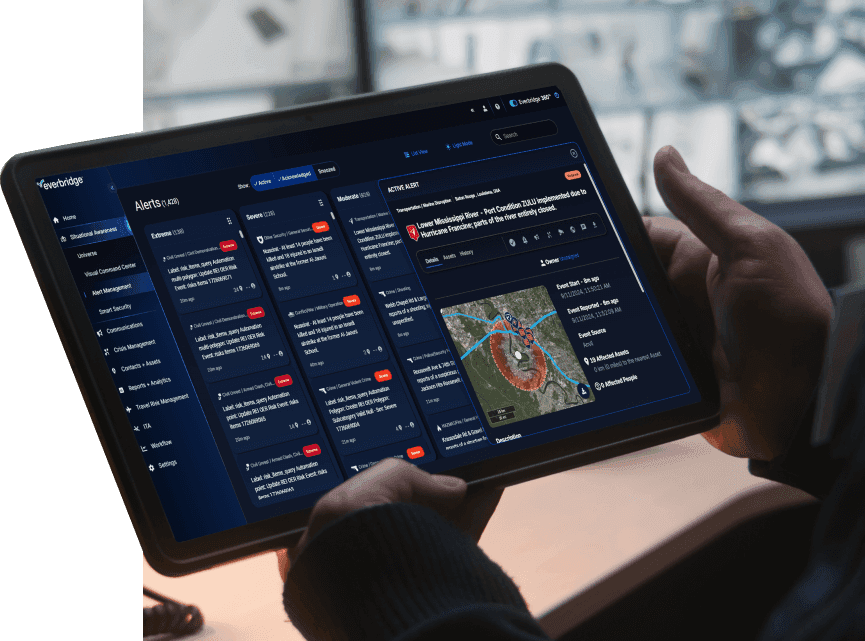
Multinational Financial Service Saves Time and Cost with Critical Event Management
Santander is the 16th largest banking institution in the world with nearly 400 branches across the Eastern United States. They aim to be the best open financial services platform with a purpose to help people and businesses prosper. Santander’s US division maintains a database including upwards of 14,000 employees and 600 assets, including offices, branches, and ATMs.
Send notifications and collect responses
- Within a single platform, Santander can now coordinate all response activities, teams, and resources to accelerate recovery times and maintain command and control during a crisis.
- 95% reduction of irrelevant incoming risk alerts due to sophisticated filtering.
- Time to notify reduced by 100% — 10–15 minutes saved for every alert and potentially up to 30 minutes saved for the entire notification lifecycle.
Challenges
Santander started an intelligence function a few years ago which relied heavily on manual processes primarily driven through email. The team had to sift through hundreds of emails daily from various risk intelligence sources to identify potentially impactful events to their employees, branches, or other assets. After identifying a risk, the team would then determine how close the risk event was to various branches using Google Maps and manually craft an alert, notice, or full brief depending on the severity of risk. After risks were detected, there was not an efficient way to manage the response.
With thousands of employees and hundreds of assets to consider, Santander required a solution that would eliminate time-consuming, inconsistent, and manual processes and optimize their overall critical event management.

“Prior to CEM, our plans were not actionable, and we struggled to track the progress of our response during high-stress critical events. With the Crisis Management module, we’re able to quickly assess the situation, activate the appropriate plan, and ensure the right actions are being taken to best protect our people and our branches.”
– Jay Sartori, VP Associate Director, Corporate Security
Solutions
Santander implemented Critical Event Management (CEM) in March 2021 and quickly saw benefits in terms of automation, time savings, scripted responses, and reporting capabilities. The entire implementation process took only three months from start to finish, which included the creation of customized templates.
Santander now uses the CEM platform’s Crisis Management module to activate response plans and track critical information. They have approximately 80 web-based task list templates and 20 critical event templates, which ensure they can quickly initiate their plans and efficiently manage the response. Digital dashboards are used to share key information about each event. Now, all tasks can be assigned and monitored online to ensure completion, and reports can be pulled automatically. Additionally, they use the module for travel management, hotel assessments, service calls, and security plans, as well as building safety risk classifications.
In terms of security, Santander has expanded the use of CEM from their intelligence center to the security operations center. Incident communications for all alarm activity and police dispatch—as well as any incidents called in through their hotline—are now immediately sent to the security management team and other stakeholders through a single platform. CEM also effectively reduced the noise around Santander’s incoming risk events by filtering their 24-hour average of 2,000 notifications down to only 100, which must be acknowledged and triaged.
The team capitalizes on CEM’s automated workflows and internal communications. They no longer rely on manually notifying an individual of their next-step responsibilities. For example, when an incident is marked as closed, it is then immediately sent to the manager for review. This increases quality control and maintains incident management consistency.
An example of a recent success came after an incident when the Santander security team passed an internal audit review with flying colors due to the extensive processes they had built out within the CEM platform. The team was able to show exactly who was contacted, what steps were taken to resolve the issue, and when each task was completed.





